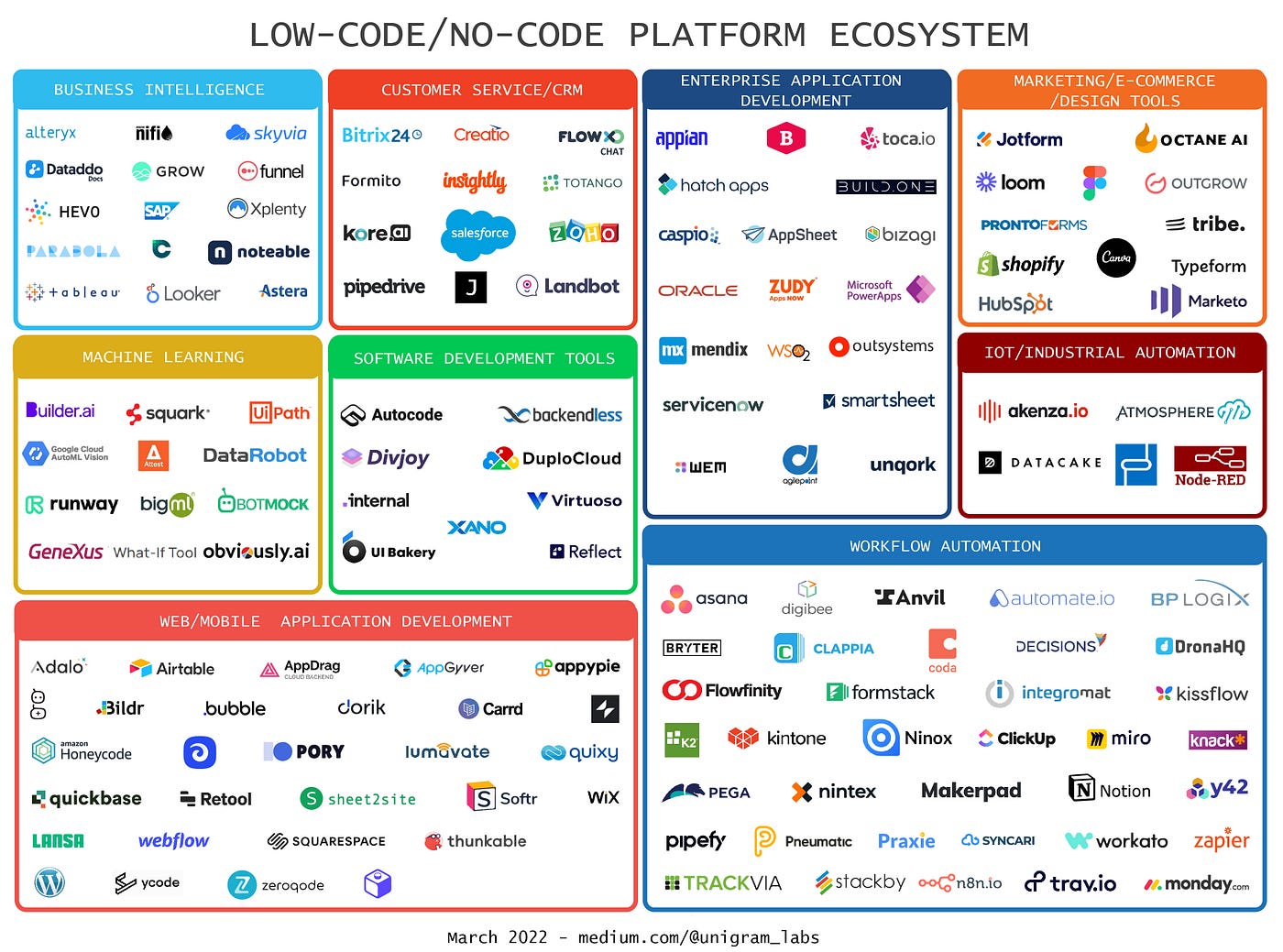Reading Time: 5 Minutes
No-code is a term that is becoming more and more popular, but what does it actually mean? In short, no-code is a platform or tool that allows for the creation of software without any coding experience. This can be a great option for non-technical people who want to create their own applications without learning how to code. Non-technical users can create no-code applications by using a visual drag-and-drop interface. This approach can be used to create a wide variety of applications, including business applications, websites or data visualizations.
1. No-code and its benefits for non-technical people
No-code platforms provide a great way for non-technical people to create and manage their own applications without having to learn how to code. This can be a huge benefit, as no-code platforms are often much simpler to use than other development platforms. Additionally, no-code platforms can often be used to create very sophisticated applications, making them a great tool for businesses of all sizes.
There are a few key benefits of no-code that make it a great option for non-technical users:
1. No-code platforms are designed to be easy to use, even for people who are not technically inclined. This means that non-technical users can quickly learn how to create and manage their own applications without having to invest a lot of time in learning how to code.
2. No-code can be used to create a wide range of applications, from simple tools to sophisticated business solutions. This means that businesses can benefit from using no-code platforms to create custom applications that meet their specific needs. Those can be easily adapted and scaled over time.
3. No-code applications are created at a much faster speed than traditional applications. This is because no-code platforms are based on pre-built templates and modules, which means that there is no need for developers to spend time coding from scratch. Instead, they can simply drag and drop the required elements into place, making no-code a much more efficient way to create applications.
4. No-code platforms often come with a wide range of features and integrations that make them very powerful tools. This means that businesses can use no-code platforms to create custom applications that are tailored to their specific needs.
2. How does no-code work and what tools are available?
No-code platforms allow for the development of applications and software without any coding or programming knowledge. These platforms use various tools and templates to allow for the creation of custom applications without any need for manual coding. This can be a boon to businesses and non-technical professionals who need to create custom applications but don't have the resources necessary to do so.
No-code platforms can be used to create a wide variety of applications, from simple websites to complex business processes. There are a number of no-code platforms available on the market, each with its own set of features and capabilities. An overview of the ecosystem can be found here:

3. What types of applications can be created with no-code?
No-code platforms allow for the development of a wide variety of applications. This can include simple websites, complex business processes, or anything in between. Some no-code platforms are focused on specific types of applications, such as business process automation or customer relationship management (CRM). Other no-code platforms are more general purpose and can be used to build a wide variety of applications.
However, it is important to note that no-code platforms are not a panacea and there are certain types of applications that may be more difficult or not reasonable to create with no-code.
4. The pros and cons of no-code
No-code platforms offer a number of benefits for businesses and non-technical professionals. These benefits can include faster application development, ease of use, and the ability to create a wide range of applications. While no-code platforms offer a number of benefits, they also have some limitations. One key limitation is that no-code platforms offer limited options for visual finetuning. This means that businesses and non-technical professionals may not have the same level of control over the look and feel of their no-code applications as they would with traditional coding. Additionally, no-code applications may also be less flexible than coding when it comes to deployment and integration along with traditional software development and IT operations.
5. How to get started with no-code?
The first step to getting started with no-code is to identify the right no-code platform for your needs. There are a number of no-code platforms available on the market, each with its own set of features and capabilities. It is important to select a no-code platform that fits the needs of your business and your team. Once you have selected a no-code platform, you will need to sign up for an account and familiarize yourself with the platform's features and capabilities. After you have done this, you will be ready to start building no-code applications. Templates offer a great way to start and can help create an app by providing a basic structure that you can then customize to fit your specific needs.
If you're looking for an easy way to get started creating your own applications, no-code platforms are a great option. They provide a user-friendly interface that makes it easy to create and manage your own applications without having to learn how to code. And because development happens quickly, you can have a working application in no time. So what are you waiting for? Get started and try out a no-code platform today!

